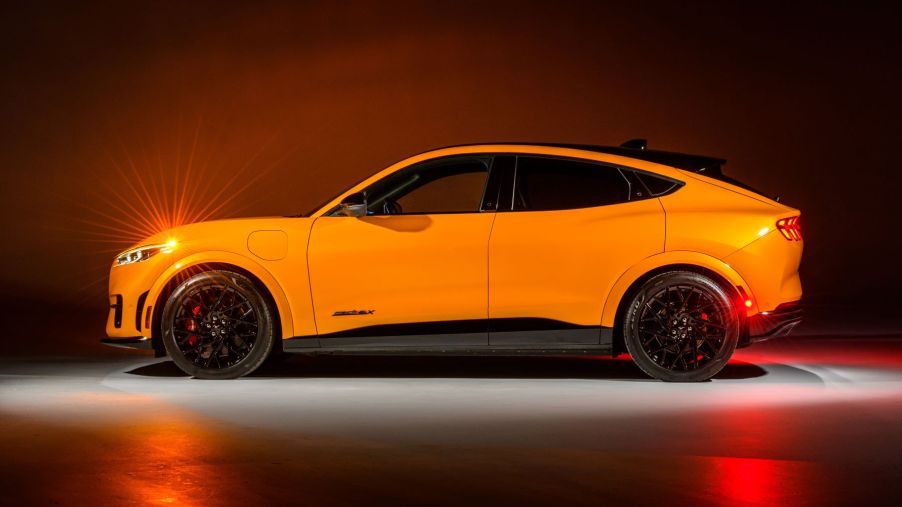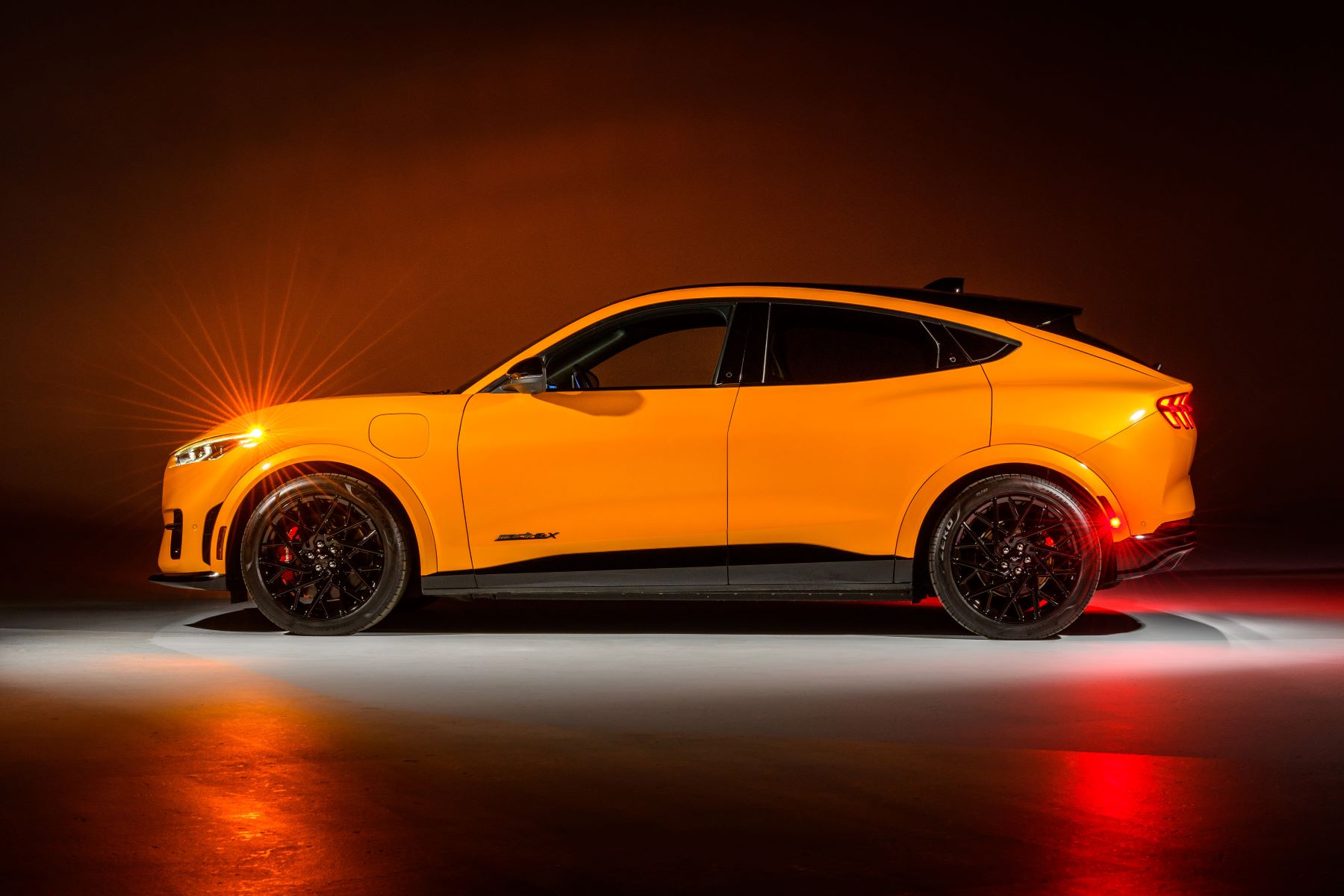
4 Advantages the 2023 Ford Mustang Mach-E Has Over the 2023 Kia Niro EV
The Kia Niro recently underwent a massive redesign for its 2023 model year after having the same exterior between 2017 and 2022. The new design is available in its hybrid, plug-in hybrid (PHEV), and EV models. So, how does the new electric model compare to its competitors? Here are four reasons to consider the 2023 Ford Mustang Mach-E over the 2023 Kia Niro EV.
1. Horsepower from the Ford Mustang Mach-E
Ford‘s electric pony car offers up to 266 hp with the base trim for both the RWD and AWD variants. Other motor configurations include a 290-hp, 346-hp, and 480 hp-setup. You can get 290 hp or 346 hp with the Premium trim alongside an extended-range battery. The 346-hp motor setup is also available in the California Route 1 trim as a solo option, while the 480-hp version can only be had with the GT and GT Performance Edition variants.
Conversely, the 2023 Kia Niro EV features the same electric motor setup across its two available trims, putting out 201 horsepower.
2. A Mustang with more torque

Torque is another area where the Ford electric SUV has the advantage over its Kia counterpart. The base trim offers 317 lb-ft of torque with the base RWD configuration, which can be increased to 428 lb-ft if you upgrade to the eAWD setup. The same 317 lb-ft and 428 lb-ft torque figures are available in the Premium and California Route 1 trims. Additionally, the performance-oriented variants push things even further, with the GT trim offering 600 lb-ft while the GT Performance Edition provides 634 lb-ft of torque.
On the other hand, the Kia Niro EV puts out 188 lb-ft of torque, just over half of what’s available in the lowest Mustang Mach-E trim.
With such a stark difference in horsepower and torque, it’s no surprise the Ford is the quicker option between the two electric SUVs. In fact, the slowest model makes a 0-60 mph acceleration run in 6.1 seconds. Also notable is the Mustang Mach-E GT Performance Edition, which only needs 3.5 seconds to make the same run.
According to Kia, the Niro EV takes 7.1 seconds to achieve the same feat.
3. The Mustang Mach-E has more cargo capacity
The Ford Mustang Mach-E is a much larger vehicle with a longer, wider, and taller body despite having 0.1 inches less ground clearance. It also offers more cargo space at 64.4 cu. ft. compared to the Kia Niro EV’s 63.7 cu. ft. Additionally, an extra 4.7 cu. ft. is available in the frunk (front trunk), while the Niro EV offers no frunk.
4. The Ford Mustang Mach-E has available AWD, while the Niro EV does not
The Kia electric SUV has a single motor mounted on the front axle. On the other hand, the Mustang Mach-E’s setup includes either a single motor on the rear axle or dual motors for AWD. Naturally, the dual motor options provide more torque and better traction in tricky terrain.
Advantages of the Kia Niro EV over the Ford Mustang Mach-E
With the power and torque advantages of the Ford Mustang Mach-E, it’s no surprise that the Kia Niro EV is more affordable. Pricing for the Ford starts at $46,895, while the Niro EV’s starting price is $39,450.
Also, with the standard range battery, the Mach-E provides 247 miles of range or less, depending on whether you have an RWD or AWD configuration. The Kia Niro EV offers a standard 253-mile EPA-estimated range across all trims.
There’s even a warranty advantage for the Kia EV, with buyers getting 10-year coverage while owners of the Ford get eight-year warranties for its electric components.


